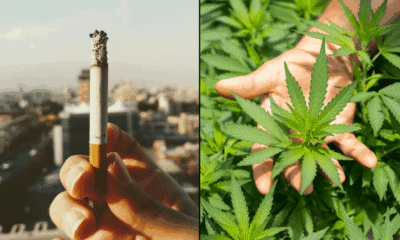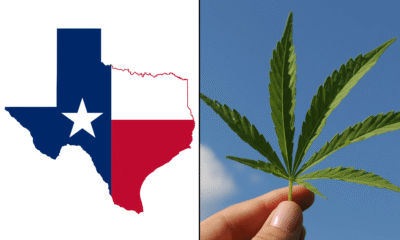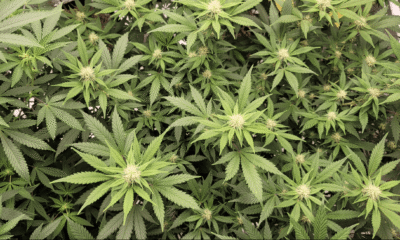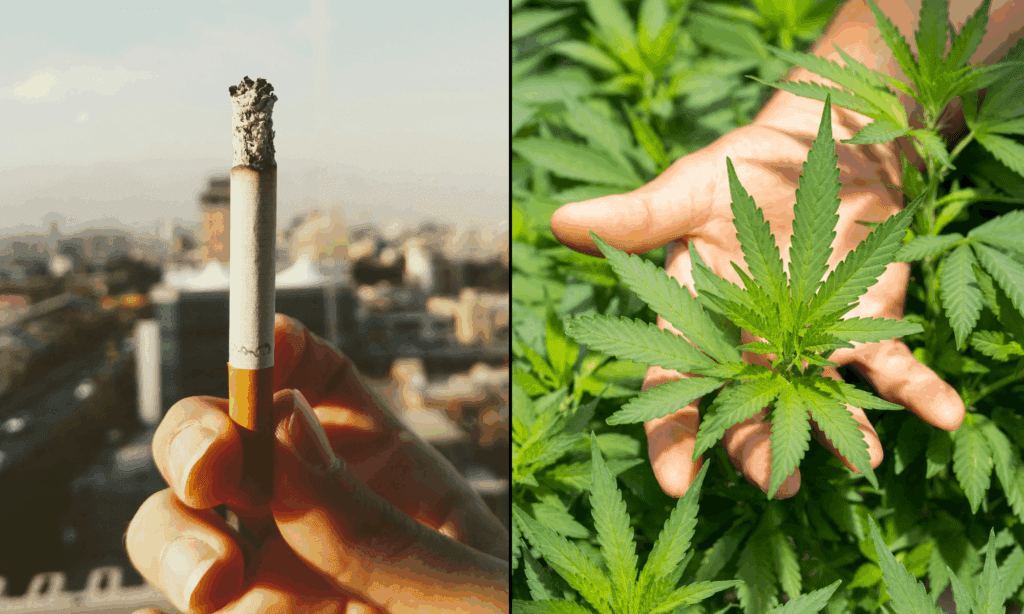featured
Cannabis Ventures, Start-Up Best Practices, and Ways to Compete
Published
4 hours agoon

Once relatively easy to break into, the cannabis industry now demands a leaner and more conservative approach to financial management, along with precise forecasting and a great deal of patience. There are inherent risks, regulatory uncertainties, and financial challenges faced by new market entrants and established operators alike. As the market continues to mature, so will your needs and approach.
Let’s take a look at some best practices for cannabis business start-ups within today’s landscape.
Structure, Build-Out, and Expectations
First, consult with your attorney and CPA regarding the type of business you’ll run in the context of the overall market. Will you be operating a cannabis dispensary or manufacturing entity? Are you a cultivator or a delivery service? Will you be vertically integrated?
While you might have a general idea of the structure for your business, financial and legal guidance on related taxation and liability can help refine your strategy to ensure the most profitable and sustainable operations.
As you map your entry into the cannabis space, you’ll first want to invest in some market analysis. Your market analysis should include research and data on market size, licensing policies of your particular municipality/state, competition, growth potential, and consumer preferences.
For retail, it should define the relevant population of your chosen market and provide insights into buying behavior for that demographic, the median household income, and the type of dispensary population growth that has occurred within a 5-, 10-, and 15-mile radius. For wholesale, consider strains, competition, and market saturation.
In addition to a market analysis, a start-up will need accurate cash flow projections, which should include revenue assumptions and financing, along with your timeline. If possible, benchmark assumptions against others in your particular market.
With the market analysis in hand, you can develop revenue projections. Consider your potential monthly purchaser base and its estimated spend. Of customer spend, what would be a realistic product breakdown? How do your intended SKUs compare with your competitors?
Finally, build detailed expense assumptions that include everything from furniture and fixtures to staffing, advertising, construction and renovation, professional services, taxes, facility maintenance, insurance, security, IT, and utilities. Keep in mind that the most successful start-ups are taking a cautious and conservative approach to their build-outs and are properly capturing costs to ensure they meet day-to-day business obligations.
Data and KPIs
Like all businesses, cannabis operations need to consistently capture data and maintain good books. Data capture can be conducted through technologies, including your inventory tracking, point of sale, accounting, and accounts payable systems. This process can then be systematized to provide the reports and analytics you need to monitor trends on the fly.
Next, identify Key Performance Indicators, or KPIs, and track their performance along with budget to actual on a post-build-out and ongoing basis. Ask yourself, do we have a realistic forecast that we could continually reassess? Solid preoperational numbers and forecasts are critical both at the point of operation and at set milestones, such as the first six, 18, and 24 months. This helps not only to refine business strategy but also to answer your investors when asked for a realistic breakeven point.
Data is crucial during the preoperational phase because it drives accurate management assumptions. It will also be critical in managing investor expectations. Consider one seemingly simple decision for a retail operator: Do we need a 1,000- or 10,000-square-foot store?
From this, you will need to determine how much of that space would be committed to sales, which may not be tax-deductible, and to inventory storage, which may be tax-deductible. Once you decide this, you will need to determine the number of employees required to run lean yet profitable operations.
Under these circumstances, what would be your estimated build-out costs? How much would you pay for rent? What’s the timing of various cash flows? Only with accurate data could you make the right determinations and measure the success of those decisions over time.
Using your initial data markers, you can then build out scenarios that allow you to visualize various options. For instance, see how results would look assuming a high-, mid-, and low-revenue operation. Likewise, you could model results under a high-salary/low-revenue versus a low-salary/high-revenue projection, as well as model against available benchmarks.
Note that if you have multiple lines of business, some of your data points will correlate. So, a combined dispensary and delivery business, for instance, could enjoy greater efficiencies. As you build out your plan, look closely for potential opportunities.
Another area where data is essential is inventory management and your business strategy around that. Use data to determine your best-selling strains, for instance, or those offering the greatest net margin potential. Keep in mind that, while one strain might be popular with consumers, the benefits to producing it could come at a price. So, evaluate whether it works to your advantage to continue with production or pivot to a less expensive strain.

Author: mscannabiz.com
MScannaBIZ for all you Mississippi Cannabis News and Information.
You may like
-


Maryland Police Want To Watch You Smoke Weed: Free Munchies and Ride Home Included
-


More Americans Now Use Marijuana Than Smoke Cigarettes, New Study Shows
-


Unexpected Pleasures of Weed: The Strain That Turned My Husband Into a Clean Freak
-


Texas Officials Adopt Rules To Expand Number Of Medical Marijuana Dispensaries In the State
-


Older Adults Increasingly Identify as Cannabis Consumers
-


Kentucky Governor Touts Surge In Medical Marijuana Patient And Business Approvals As State Prepares For Program Launch
featured
Maryland Police Want To Watch You Smoke Weed: Free Munchies and Ride Home Included
Published
4 minutes agoon
October 24, 2025
You smoke weed in front of the cops, get free munchies, and a ride home. Not a dream, no. It’s the new Ocean City Police Department (OCPD) program, as part of the Maryland Highway Safety Office’s Zero Deaths DUI Conference, held in partnership with Cannabis Green Lab. And it’s happening on Sunday, October 26, from noon to 4 p.m.
In Ocean City, Maryland, the police department put out a call for volunteers to light up and drive for training purposes, and quickly received an “overwhelming” number of volunteers, according to the OCPD post. All in the name of science, education and, probably, free lunch (they did have to bring their own stash, but still, not a bad deal.)
The OCPD was only looking for 12 to 14 adults over 21 years old to “smoke cannabis for educational purposes while officers learn to recognize cannabis impairment,” but the post went viral within hours, forcing them to close the call, according to Marijuana Moment.
And because it sounded so good, the 12–14 spots turned into a flood of applications, hundreds of people reportedly signing up within seven hours.

Training cops to read the high, not just smell it
The initiative is part of the Maryland’s Zero Deaths DUI Conference, in partnership with Cannabis Green Lab. The Green Lab, says OCPD, “helps both officers and participants better understand the effects and levels of impairment caused by cannabis, all in a safe, controlled setting.”
Participants have to bring their own weed, consume it before the driving exercises, and then get a free lunch, “courtesy of MHSO,” clarified the department. To keep things above board, a shuttle service was arranged to take volunteers home once the session and the meal were over, since no, you can’t drive high, not even in states where smoking is legal.
“We’ll have about 40 student officers participating, so it’s a great way to help train the next generation of law enforcement safely and responsibly,” the department said.
This training comes after a crucial legal shift in Maryland. Following adult-use legalization, Governor Wes Moore (D) allowed a bill to become law prohibiting police from using the smell or simple possession of cannabis as grounds for a search. And earlier this year, Montgomery County also began relaxing cannabis policies for would-be officers to boost recruitment; another sign that, even inside the force, times are changing.
That means law enforcement can no longer rely on the ‘odor test’—a sniff and a hunch, basically—to justify arrests or searches. The Green Lab training program seeks to update that outdated logic with actual observation and data, bridging the gap between legalization and enforcement.
It’s rare to see the words ‘police’, ‘weed’, and ‘free lunch’ in the same sentence, and rarer still for it to be entirely legal. But that’s Maryland’s new reality: a state trying to redefine what responsible cannabis use—and enforcement—looks like. And as Governor Moore himself once admitted, even his historic win couldn’t top the people’s will: “There was one thing that beat me on the ballot: marijuana legalization.”

Author: mscannabiz.com
MScannaBIZ for all you Mississippi Cannabis News and Information.
featured
More Americans Now Use Marijuana Than Smoke Cigarettes, New Study Shows
Published
1 hour agoon
October 24, 2025
More Americans now use marijuana than smoke cigarettes amid shifting perceptions of harm of the two substances, according to a new study.
Researchers at the State University of New York (SUNY) and the University of Kentucky provided what they called the “most comprehensive” analysis of trends in adults who use only cannabis, only tobacco or both from 2015-2023—revealing a consistent decline in cigarette smoking as marijuana consumption rose.
From 2021 to 2023, data from the National Survey on Drug Use and Health (NSDUH) showed that the rate of people who reported using only cannabis in the past 30 days “rose sharply” from 7.2 percent to 10.6 percent—”overtaking cigarette-only use,” which declined during that period.
“Cannabis-only use increased from 3.9 percent to 6.5 percent in 2015–2019, was 7.1 percent in 2020, and increased again from 7.9 percent to 10.6 percent in 2021–2023. Cigarette-only use decreased from 15.0 percent to 12.0 percent in 2015–2019, was 10.3 percent in 2020, and declined again from 10.8 percent to 8.8 percent in 2021–2023. Co-use was relatively stable across the different periods.”
Writing in the journal of Addictive Behaviors, the researchers said that the evolving trends in use of the two substances could be evidence of a “substitution” effect amid “changing harm perceptions, evolving legislation, and shifting norms.”
“The rising cannabis-only use across groups parallels the expanding state-level recreational cannabis legalization, increasing accessibility and normalization,” the paper says. “Conversely, continued declines in cigarette-only use align with decades of tobacco control efforts and evolving norms surrounding smoking. The relatively stable co-use trends may reflect substitution dynamics whereby some individuals replace cigarettes with cannabis, preventing co-use from rising in tandem with cannabis-only use.”
Other researchers have also separately observed a similar trend where cannabis is increasingly used as an alcohol substitute.
“During 2015–2019, cigarette-only use declined, while cannabis-only use increased across nearly all sociodemographic groups.”
Cigarette-only use was most prevalent “among socioeconomically disadvantaged adults (with lower education, income, or lacking insurance),” the study found, whereas cannabis-only use “predominated among more socioeconomically advantaged groups (college-educated, high-income, and privately insured).”
While prior studies have concluded that marijuana smoke exposure is not equally or more dangerous to health than tobacco smoking, the authors of the new paper suggested that the “surge in cannabis use” as “tobacco use wanes” represents “a worrisome trend among adults.”
“Without timely policy response, cannabis may become the next public health crisis,” they cautioned.
“Cannabis-only use and co-use trends pose public health risks akin to cigarettes, necessitating targeted prevention campaigns,” the paper says. “A multi-pronged strategy of public health education, early detection, and effective treatment development is vital to prevent cannabis from becoming the next public health crisis.”
“U.S. cannabis legislation is rapidly evolving. While declining cigarette use is encouraging, rising cannabis use is concerning,” the researchers argued. “Although emerging evidence suggests potential therapeutic applications of cannabis—pain management, opioid detoxification and tapering–considerable risks exist, with heterogeneous effects by administration mode, potency, use frequency and intensity, and population.”
It should be noted that data on cannabis use in the study included all forms of consumption, from smokable flower and vaping concentrates to edibles and tinctures. By contrast, the data on cigarettes excluded those who vaped nicotine.
The study involved an unweighted sample size of 42,163 to 46,906 participants for each time period—with the exception of 2020 when there was a smaller sample of 27,001 amid pandemic-related complications.
“Increasing adults’ cannabis use alongside declining cigarette use highlights evolving substance use patterns warranting monitoring and targeted prevention, treatment, and policy efforts,” the study concluded.
To the authors’ point about shifting perceptions of harm, a recent survey found that, on the list of activities that Americans say is dangerous for pregnant women to engage in, using marijuana falls below drinking alcohol or smoking cigarettes.
Consistent with the latest study, survey data from Gallup that was released late last year found that 15 percent of U.S. adults reported that they smoke cannabis, which is more than the 11 percent of who told the polling firm that they have smoked any cigarettes in the past week.
A separate Gallup report at the beginning of last year similarly found that significantly more Americans said they smoked marijuana than cigarettes—with young people being more than five times more likely to consume cannabis compared to tobacco.

Author: mscannabiz.com
MScannaBIZ for all you Mississippi Cannabis News and Information.
featured
Unexpected Pleasures of Weed: The Strain That Turned My Husband Into a Clean Freak
Published
2 hours agoon
October 24, 2025
Dan and I have been married for over 20 years, and we have always maintained a very simple domestic arrangement. He does all the cooking: the three usual meals, plus a 9 pm bonus one, and I do the dishes. This has always been assumed and has always worked for us.
That is, until one day when I went to clean up and the kitchen was spotless. All the dishes, including the ones from the 9 pm fourth meal of the day, were washed and dried. The pots and pans sparkled. The countertops were wiped with purpose.
And what, you may ask, prompted him to change out his routine? Blue Dream.
Compulsive cleaning, like Dan’s need to do the dishes, is a known anecdotal effect of cannabis use, especially with sativa-dominant strains like Blue Dream. The effect is usually temporary and passes as the high wears off, which, for inhaling, typically lasts 2 to 3 hours.
However, I needed some scientific background on how this works, so I emailed my friend Dani Fontaine, an Endocannabinoidologist and NeuroTherapist and asked her this simple question: Why does my husband do the dishes, like he has OCD, after Blue Dream?
“It’s the combination of the terpenes and the terpene ratios, which include Myrcene, Pinene, and BCP (b-caryophyllene),” she said. Okay, it seems simple. She continued: “The terpene combination of a true Blue Dream strain enhances dopamine transmission in the mesolimbic reward pathway. THC activates the CB1 receptors in the prefrontal cortex and basal ganglia, which is the space that modulates dopamine release from the VTA (ventral tegmental area).”
However, she says, you need to take into account someone’s DNA. “I would say that the above is what the majority of human bodies feel,” she continues, “but if your DNA is composed with certain markers, it can give someone a different experience due to how the terpenes and cannabinoids are digesting in the system.”
Here’s where it gets interesting. Normally, Anandamide can balance out and fine-tune the start and stop actions of repetitive and habitual behaviors, but when someone consumes THC, it shuts off Anandamide production as THC is a stronger signal that can override the natural “off switch.” Some people can’t digest THC, though. (We need the enzyme in order to break it down properly and lots of use over time makes it harder to naturally produce the breakdown.) This would put someone into a loop cycle a bit heavier due to not being able to digest the compound.
As the THC starts to metabolize, CB1 receptors downregulate. This is when the “burnt” feeling starts creeping in due to our neurochemicals that push us into a space of contentment or a parasympathetic state (freeze/fawn/rest/digest). She finishes: Cannabis in general lowers amygdala reactivity and can dissolve anxiety boundaries, which also puts people in a state of calm production.
Now I can see how excessive cleanliness can be a passion, and only considered a disorder (OCD) when it becomes distressing, time-consuming, or significantly disruptive to daily life. For now, I simply love our new working relationship.
Cover image made with AI

Author: mscannabiz.com
MScannaBIZ for all you Mississippi Cannabis News and Information.

Maryland Police Want To Watch You Smoke Weed: Free Munchies and Ride Home Included

More Americans Now Use Marijuana Than Smoke Cigarettes, New Study Shows

Unexpected Pleasures of Weed: The Strain That Turned My Husband Into a Clean Freak

Texas Officials Adopt Rules To Expand Number Of Medical Marijuana Dispensaries In the State

Cannabis Ventures, Start-Up Best Practices, and Ways to Compete

Older Adults Increasingly Identify as Cannabis Consumers

Kentucky Governor Touts Surge In Medical Marijuana Patient And Business Approvals As State Prepares For Program Launch

SCOTUS cannabis & guns case gets delay request (Newsletter: October 24, 2025)

Ohio House Passes Cannabis, Hemp Bill Resulting From ‘Venn Diagram From Hell’

What To Know About Cannabis And A Brain Aneurysm

MariMed to Expand Brand Distribution to New York

Time for a Cannabis Reboot: Local Roots, Fair Markets, Real Change

Ohio Health Agency Grants $400,000 To Fund Psychedelics Education And Training For First Responders, Doctors And More

Curio Wellness Acquires 4 Greenlight Dispensaries in Missouri

The best places to be high in Seattle

Colombia’s Bold Offer to Trump: Legal Weed Exports for Peace

Trump DOJ Asks Supreme Court For Delayed Schedule In Case On Marijuana Users’ Gun Rights

Whiskey Company Scales Back Operations, Citing ‘Consumer Shifts’ Toward Marijuana As Alcohol Alternative

Smart Cannabis: The AI Revolution No Operator Can Ignore

New Jersey Gubernatorial Candidates Need To Step Up For Cannabis Consumers (Op-Ed)

Millennials Are Spending Big on Luxury Travel

West Virginia Medical Marijuana Revenue Is Supposed To Support Drug Treatment Programs, But Sits Unspent As Officials Worry About Federal Prohibition

Frequent Marijuana Use Is Tied To Lower Risk Of Liver Disease From Alcohol, New Study Finds

Ohio bill to scale back cannabis legalization passed by House (Newsletter: October 23, 2025)

Alert: Department of Cannabis Control updates data dashboards with full data for 2023

Connecticut Appoints The US’s First Cannabis Ombudsperson – Yes there is a pun in there and I’m Sure Erin Kirk Is Going To Hear It More Than Once!

5 best CBD creams of 2024 by Leafly

Recreational cannabis on ballot for third time in South Dakota

EU initiative begins bid to open access to psychedelic therapies
New Study Analyzes the Effects of THCV, CBD on Weight Loss

Free delta-9 gummies from Bay Smokes

5 best autoflower seed banks of 2024 by Leafly

Discover New York’s dankest cannabis brands [September 2024]

Press Release: CANNRA Calls for Farm Bill to Clarify Existing State Authority to Regulate Hemp Products

May 2024 Leafly HighLight: Pink Runtz strain

5 best THC drinks of 2024 by Leafly

Local medical cannabis dispensary reacts to MSDH pulling Rapid Analytics License – WLBT

6 best CBD gummies of 2024 by Leafly

Curaleaf Start Process Of Getting Their Claws Into The UK’s National Health System – With Former MP (Resigned Today 30/5/24) As The Front Man

Horn Lake denies cannabis dispensary request to allow sale of drug paraphernalia and Sunday sales | News

5 best delta-9 THC gummies of 2024 by Leafly

The Daily Hit: October 2, 2024

Mississippi city official pleads guilty to selling fake CBD products

Nevada CCB to Accept Applications for Cannabis Establishments in White Pine County – “Only one cultivation and one production license will be awarded in White Pine County”

Weekly Update: Monday, May 13, 2024 including, New Guide for Renewals & May Board meeting application deadline

5 best THCA flower of 2024 by Leafly

6 best hemp pre-rolls of 2024 by Leafly

PRESS RELEASE : Justice Department Submits Proposed Regulation to Reschedule Marijuana
Trending
-

 California Cannabis Updates1 year ago
California Cannabis Updates1 year agoAlert: Department of Cannabis Control updates data dashboards with full data for 2023
-

 Breaking News1 year ago
Breaking News1 year agoConnecticut Appoints The US’s First Cannabis Ombudsperson – Yes there is a pun in there and I’m Sure Erin Kirk Is Going To Hear It More Than Once!
-

 best list1 year ago
best list1 year ago5 best CBD creams of 2024 by Leafly
-

 Business1 year ago
Business1 year agoRecreational cannabis on ballot for third time in South Dakota
-

 Business1 year ago
Business1 year agoEU initiative begins bid to open access to psychedelic therapies
-

 cbd1 year ago
cbd1 year agoNew Study Analyzes the Effects of THCV, CBD on Weight Loss
-

 Bay Smokes1 year ago
Bay Smokes1 year agoFree delta-9 gummies from Bay Smokes
-

 autoflower seeds1 year ago
autoflower seeds1 year ago5 best autoflower seed banks of 2024 by Leafly



